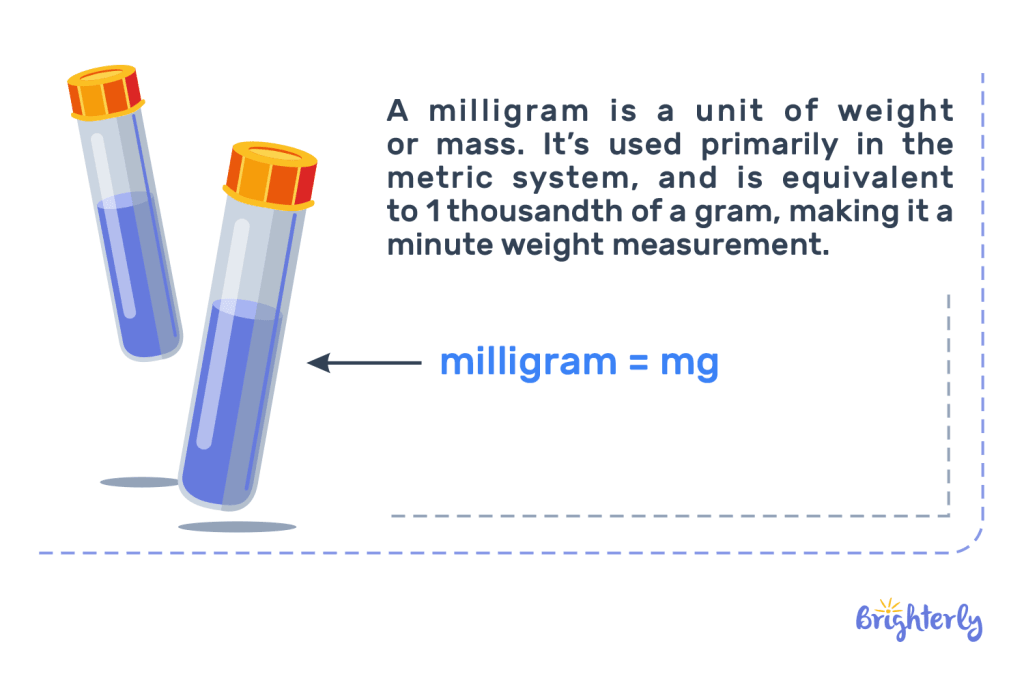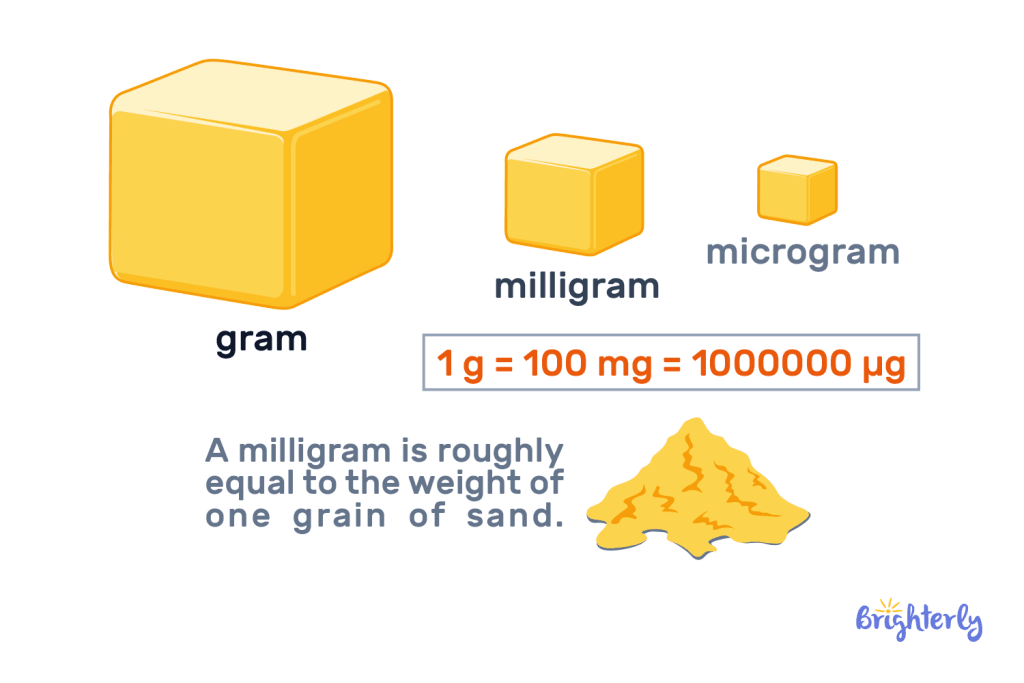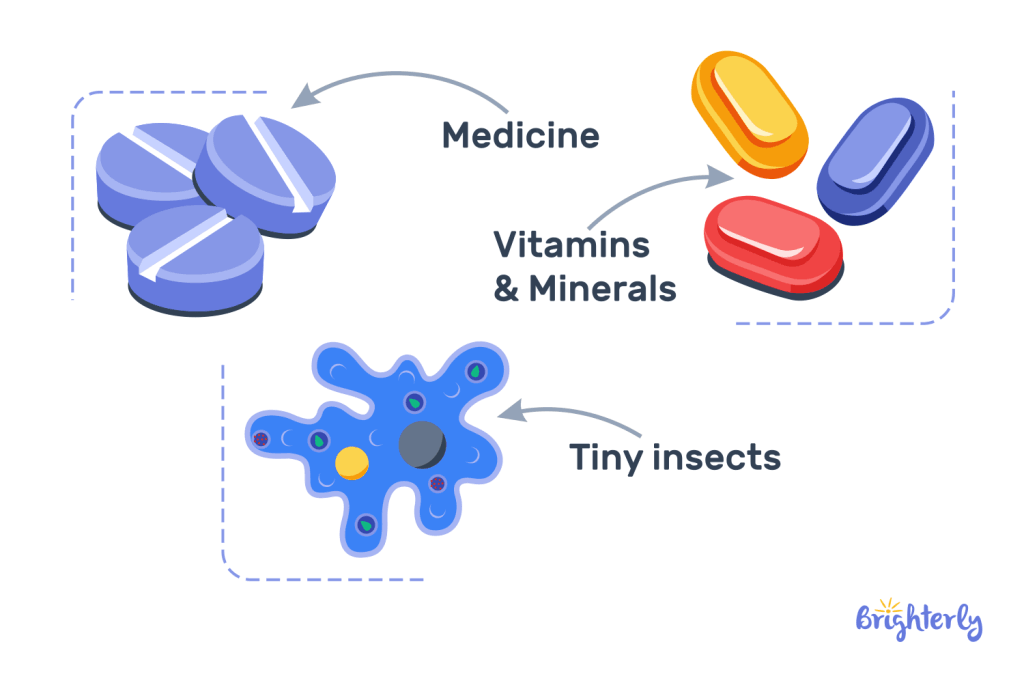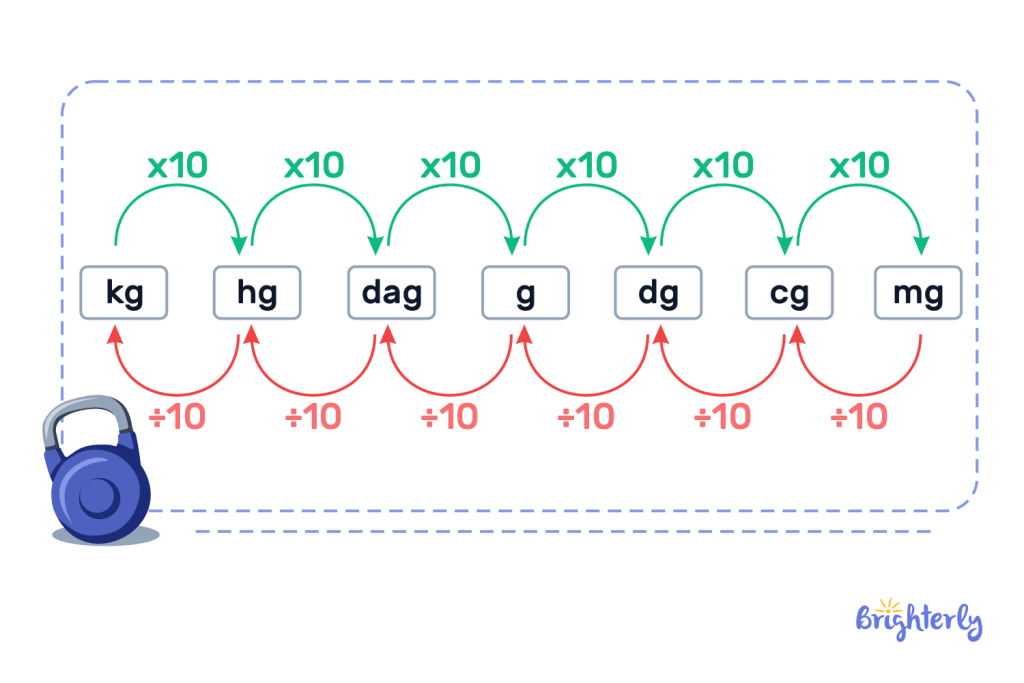Milligram: Definition, Examples, and Practice Problems
reviewed by Jo-ann Caballes
Updated on July 15, 2025
At Brighterly, we’re passionate about making math easy to learn and fun to put into practice.
Today we’re going to delve into weight measurements and talk about the milligram, which forms part of the metric system.
You’ll encounter the measurement of milligrams in everyday life, from the back of food labels to the amount of active ingredients in medicines and vitamins.
Here, we’ll cover what a milligram is, what it’s equivalent to, and different objects and items that weigh a milligram. We’ll also provide practice math problems and math worksheets so you can put your knowledge to the test.
What is a milligram?
A milligram is a unit of weight or mass. It’s used primarily in the metric system, and is equivalent to 1 thousandth of a gram, making it a minute weight measurement.
You may sometimes see milligrams written as mg – that’s because mg is the milligram abbreviation.

How much is a milligram?
A milligram is equal to a thousandth of a gram, making it a very small unit of measurement. To put it into real-life context, a milligram is roughly equal to the weight of one grain of sand.

What is mg unit?
The shortened unit of mg stands for milligram. When you refer to mg measurements, it is more common to use the abbreviation of mg. This is also known as the milligram symbol.
How many units is 1 mg?
If we use the base unit of mass from the International System of Units (SI), which is a kilogram, 1 mg is equivalent to 1/1000000 units.
Difference between grams and milligrams
The difference between grams and milligrams is that a milligram is 1/1000th of a gram. That means a gram is 1000 times bigger than a milligram, and a milligram is 1000 times smaller than a gram.
Are milligrams bigger than grams?
No, milligrams are not bigger than grams. In fact, they are 1000 times smaller than grams!
Is mcg smaller than mg?
Yes, micrograms are smaller than milligrams. In fact, milligrams are 1000 times larger than micrograms!
Milligram size: what is a milligram equal to?
There are many units of measurement that a milligram is equal to, including:
Measurement from and to |
Conversion factor |
| Milligram to kilogram (kg) | 1 mg = 1×106 kg |
| Milligram to gram (g) | 1 mg = 1 x 1000 g |
| Milligram to microgram (µg or mcg) | 1 mg = 1 µg x 1000 |
| Milligram to nanogram (ng) | 1 mg = 1 ng x 1000000 |
| Milligram to pound (lb) | 1 mg = 2.20462 x 106 lb |
| Milligram to ounce (oz) | 1 mg = 3.5274 x 105 oz |
| Milligram to ton (metric) (t) | 1 mg = 1 x 109 t |
| Milligram to carat (ct) | 1 mg = 5 ct x 1000 |
| Milligram to grain (gr) | 1 mg = 1 gr x 64.799 |
There are lots of real-life examples of milligrams all around us. Here are 5 things measured in milligrams:
- Medicine – often, the active ingredients in medicines like aspirin are listed in mg
- Food – similarly, some of the components of food, like sodium and potassium, are listed in mg
- Skincare and haircare ingredients – the mg measurement is very often used to measure the amount of active ingredients in beauty products
- Vitamins and minerals – if you take a multivitamin, the measurements of the vitamin in your gummy or tablet are measured in mg
- Tiny insects – minuscule and microscopic insects are often measured in mg

You may notice a pattern here, in that single units of milligrams are either very difficult or impossible to see with the naked eye. That’s because it’s such a small unit of measurement!
Milligrams and other units of mass or weight
You might be aware that milligrams are part of the gram family of measurements, meaning these measurements are all connected to one another. It is based on the base unit of math, the kilogram. The order goes:

Things that weigh 1 mg
A milligram is a very small unit of measurement, but there are some items that weigh roughly a milligram. So if you’re wondering, “What does a milligram look like?”, it looks like:
- A grain of sand
- A small snowflake
- A milliliter of water
- A grain of salt
Solved math tasks: examples
Now that you’ve learnt everything you need to know about the milligram, it’s time to try out some math tasks. We’ve provided some solved tasks below – check your answers to see how many you get right the first time!
How many milligrams is in a 5-gram piece of candy?
Answer:
| 5000 mg. |
Because mg is 1/1000th of a gram, we need to multiply our grams by 1000 to get our answer.
5 grams x 1000 = 5000 mg.
How many grams are in 35000 mg?
Answer:
| 35 grams. |
Because a gram is equivalent to 0.001 mg, to get our grams figure, we need to divide our mg figure by 1000.
35000 mg ÷ 1000 = 35 grams.
What do you have to multiply a weight in kilograms by to get its weight in milligrams?
Answer:
| 1000000. |
There are one million milligrams in a kilogram, so in order to find out how much a weight in kilograms weighs in milligrams, we need to multiply it by 1000000.
Milligram: practice math problems
Milligram: worksheets
To become a master of the milligram and other units of measurement, you need to put your knowledge into practice. Download our fun, free worksheets to practice your learning and become a math whizz!





